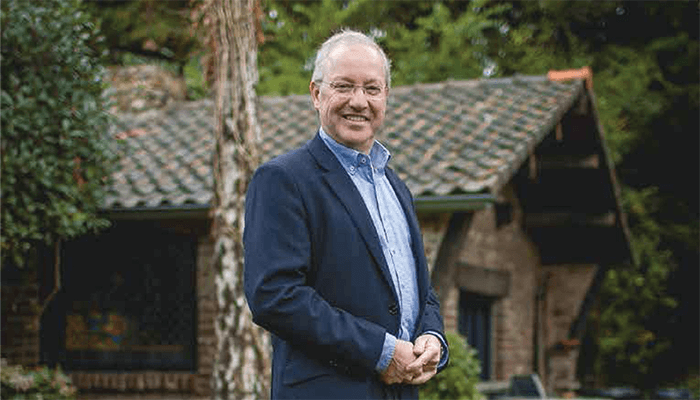To combat climate change, alleviate the depletion of natural resources, and reduce plastic pollution, there is a clamor for the circular use of plastics – part of a wider move towards a circular economy. However, moving away from classical, linear value chains won’t be easy. All players – manufacturers of base polymers, compounders, shapers (making the final parts), end users, waste collectors, as well as companies taking care of sorting, washing and further processing – need to work together.
When starting with large amounts of mixed plastic waste, sorting is key. And though end users can play a role, waste often consists of a large number of base plastic and compounds contaminated with – for example – food remains. Some plastics can be relatively easily separated from others based on their density or other physical or chemical characteristics, but for others the task is more difficult. Relatively pure fractions are easier to recycle compared with less pure fractions, which require different forms of further physical and/or chemical processing. And that’s why we distinguish between mechanical recycling – where no chemistry is required and is thereby relatively energy (climate) friendly – and chemical recycling, which requires (much) more energy. Nevertheless, chemical recycling is difficult to avoid given that waste streams always contain fractions that are too complex or would require too much effort to mechanically sort. And materials cannot be endlessly mechanically recycled because of the chemical degradation that occurs during subsequent life cycles.
Regardless of the route chosen, analytical science must play an important role. For example, chemical recognition in sorting lines needs to be faster and more specific to get to purer plastic fractions. In the past, complex sorting plants adopted a combination of detection and separation techniques, including density and/ or magnetic separation, spectroscopic detection techniques (UV/VIS, NIR, XRF, and laser/optical sorting). Still, significant challenges lie ahead when it comes to further enhancing the specificity and speed of detection and sorting – especially for similar materials, such as various styrene-based polymers or different polyamide types. Fortunately, we are seeing new developments in analytical techniques and methods that focus specifically on plastic recycling; for example, Netherlands-based company Veridis is working on a new detector that uses thermal identification to directly characterize a mixture of plastic flakes without the need for further homogenization. Other researchers are focusing efforts on adding tags and/or other tools to speed up identification.


However, to really speed things up, the plastic industry needs to gradually start adapting their strategies to make new materials better suited for recycling – in short, designing for recycling. Presently, recycled plastics are relatively common – in downcycled applications like traffic bollards, for example. But we are a long way from routinely using recycled plastics in high end applications that are comparable to those of the original material; for example, the needs for stringent mechanical (or other) functional properties and challenging processing conditions, such as high temperatures.
A big challenge here is that recycled plastics are highly impure, often consisting of complex mixtures of all kinds of plastics, compounds, additives, remainders of their applications (for example, food), and partially degraded material – all of which vary over time and from batch to batch. For more demanding applications, a material’s composition must be relatively constant in terms of its constituent components and their molecular characteristics, such as molar mass distribution and branching. This challenge is closely connected to the second challenge in plastic recycling: economies of scale. Or put another way, the ability to gather enough recyclate of sufficiently narrow compositional specifications that allow specific recycling processes to become economically feasible. Building such specificity poses significant challenges with regard to collection and logistics – not least the significant effort and increased carbon footprint.
Given the compositional variance and complexity of recyclate, analytical science will need to make huge strides in terms of its understanding of the relationships between impurities and the final mechanical, optical, and other physical properties of plastics. We cannot simply use specifications that have been set for virgin materials. In many cases, recyclate will not be anywhere near as pure and its composition will vary to a much larger extent. Two important questions spring to mind: Which compositional variations can we allow from the perspective of functional properties? And what about safety? Recyclates may contain components that could put people’s health at risk. It’s fair to state that compositional characterization of complex mixed plastic waste and investigating relationships towards next use applications is still in its infancy. Few studies are known in this area and yet we clearly need to make great strides.
But there’s more; any advances in standardized characterization need to be accompanied by a uniform nomenclature of recuperated materials. On one hand, a connection to the original material, also serving REACH, needs to be incorporated; on the other hand, the nomenclature should comfort users by informing them about application families, material specifics, and quality. By speaking the same language, both in characterization and nomenclature, we can take the next step and grow the recycled volumes towards those of primary materials.
Clearly, detailed, compositional insights in recyclates are crucial, and the importance of the role of analytics cannot easily be overestimated. That said, compositional insights can be strongly assisted with paper trails – or, better, a materials passport that describes the history of waste streams, its original composition, the way materials were processed, its use in next-use applications, and its route thereafter. Such a materials passport could be of great help in getting recyclate to its next destination. Although a relatively new concept, there are already good examples of how such systems promote the building of circular value chains.
One example is a manufacturer of safety shoes that documents a completely circular process in a materials passport (C_passport®), including recycling and next-use applications. Other applications include cleaning products, building and construction materials, and textiles.
To enhance awareness of the importance of compositional insights and traceability of plastic recyclate, recently TI-COAST (Top Institute for Comprehensive Analytical Science and Technology), The Netherlands, together with FBBasic and Cirmar, organized a mini symposium on “Quality assurance in the recycle chain” in Amersfoort. The organisations gathered some 70 persons throughout the value chain together, including various experts from the plastic recycling world, quality assurance organizations, and polymer producing industry, who shed light on the status quo, the developments needed, and the impact developments could have on the entire plastic industry.
During breakout sessions, the participants discussed the presented themes – namely, the dual need for a material passport and enhanced, standardized analytics – both of which could help predict the applicability of recyclates in high-end applications. However, it also became very clear that many players in the value chain currently struggle with the complexity of the matter – and so, choosing a direction and immediate next steps remains challenging. Many agreed that steering and regulation from (inter)national authorities was pivotal. Fortunately, in that regard, the EU in particular is taking a leading role by issuing mandatory guidance on the major steps required before 2030. In the Netherlands, a large initiative on circular plastics (with a focus on characterization and sorting) was given funding of more than 300 million euros by the Dutch Growth Fund in 2022.
Analytical science will play a pivotal role in setting up new, complex chemical processes for plastic recycling; analytics must be the eyes and ears of understanding how new processes work. Though essential, these processes cannot exist without a uniform nomenclature and documentation in materials passports.
TI-COAST, FBBasic/Cirmar – together with affiliated partners – are now setting up a evaluative framework for both characterization and nomenclature, fed by practical use cases. Those who are interested in joining and contributing to this development are invited to participate. For the upcoming year, new events will be organized on this topic. Updates can be found on www.ti-coast.com and www.cirmar.com.






